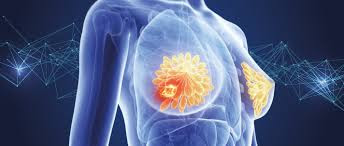Badger Club
to discuss results from the Tri-Cities Community Health Needs Assessment - World Health
Informatics Blog.
BY KAREN HAYES OCTOBER 19, 2022 11:00 AM
Not everyone in Benton and Franklin Counties has the
opportunity to live the healthiest life they could. Why? It’s easy to conclude
that each of us could do that... if we really wanted to. But the 2022 Community
Health Needs Assessment (CHNA) clearly tells a different story. The findings
will be shared in an online Badger Forum on at 12 p.m. Thursday, Oct. 20. The
CHNA represents many months of collecting and analyzing data, followed by
asking questions. A lot of questions. Questions like ‘why is there a 13-year
difference in life expectancy from one neighborhood to another?’ Or ‘how are
our children and young adults doing?’ For nearly a year, representatives from
the Benton-Franklin Health District, Benton-Franklin Community Health Alliance,
Kadlec Regional Medical Center, and Prosser Memorial Hospital have been
reviewing quantitative data and conducting interviews with partners, including
the leadership of Trios and Lourdes Health, listening sessions with community
members in English and Spanish, and community forums with subject matter
experts. The CHNA helps determine which priority health needs the community
should focus on over the next three to-five years. It is a systematic and
shared process for identifying and analyzing community needs and assets throughout
Benton and Franklin Counties. The CHNA includes input from those who represent
the broad interests of the community and helps hospitals, health departments,
and community organizations understand and address our community’s health
status and needs. We didn’t just ask each other. Results from interviews with
community partners are essential but we went well beyond that: We sat down with
people who brought “lived experience” to the table. We heard personal stories
that helped identify the following high priority community needs: mental
health; substance use/misuse; homelessness and housing instability; and access
to basic needs, such as economic security, food, childcare, safety, and health
care services. These are not things that can be addressed by our health care
system alone. The purpose of the CHNA is to identify and start conversations
about building a healthier community for all residents.
Results from the community survey indicate that
approximately half of the respondents in both counties rate their physical,
mental, and dental health as good. Survey findings reveal inequities with four
groups consistently reporting lower quality of life, lower overall health, and
less access to health care than other groups: respondents aged 18-to-34,
Hispanic respondents, respondents with low incomes, and Franklin County
respondents. Cost and not having a regular provider were leading reasons
reported for those lacking adequate healthcare services. Behavioral health is
defined as both mental health and substance use disorder services. Forum
participants identified the need for an increased number of counselors and
other mental health providers, improved access to recovery services for adults
and especially for adolescents, and more responsive crisis support services.
Pervasive stigma about mental illness was cited by providers and patients
alike. A need for prevention and response efforts was strongly identified.
Housing and homelessness forum participants identified the need for
low-barrier, immediate housing to support the proven “housing first” strategy.
The forums recommended addressing issues related to zoning and building codes
to create more affordable housing; identification and linkage to resources; and
addressing stigma directed at those experiencing homelessness or housing
instability. General community forums identified needs related to youth
wellness, environmental health, chronic disease prevention, and access to care
and resources.
Quantitative data is presented through a life course
perspective and includes the following health indicators: pregnancy, birth, and
sexual health; family and community; activity, nutrition and weight; access to
healthcare and use of preventative services; mental and behavioral health;
substance use; violence and injury prevention; chronic illness; life expectancy,
and leading causes of death and quality of life. The CHNA process resulted in
the prioritization of behavioral health, housing and homelessness, access to
health, and community partnership development. In order to be successful, the
Community Health Improvement Plan (CHIP) will need to engage a broad
cross-section of the community, including business, education, social services,
health care and — most important of all — citizens like you and me. To learn
more and join the conversation, plan to attend the Badger Forum at noon on
Thursday, Oct. 20 via Zoom. Because of the importance of this discussion, the
Benton-Franklin Community Health Alliance has arranged for this Badger Forum to
be presented at no cost to members and non-members alike. To register, please
visit the Badger Club website at www.columbiabasinbadgers.com. The forum will
be followed by Table Talk, a half-hour open mic discussion with those who
attended the forum. Karen Hayes is the Community Investment Manager for Kadlec
Regional Medical Center.
Please live your
valuable comments so i can improve my Blog further
Thank you
World Health
Informatics Blog
Note :
1) This blog is originally published on
2) This Blog is
for Education purpose only and not a treatment for any diseases






